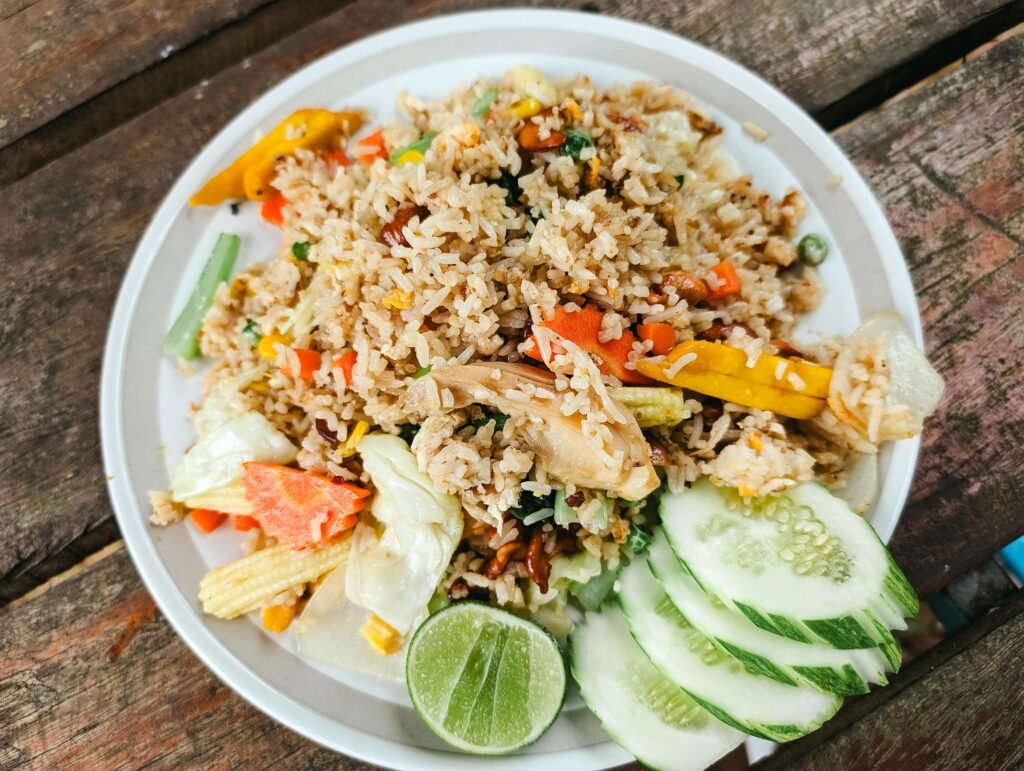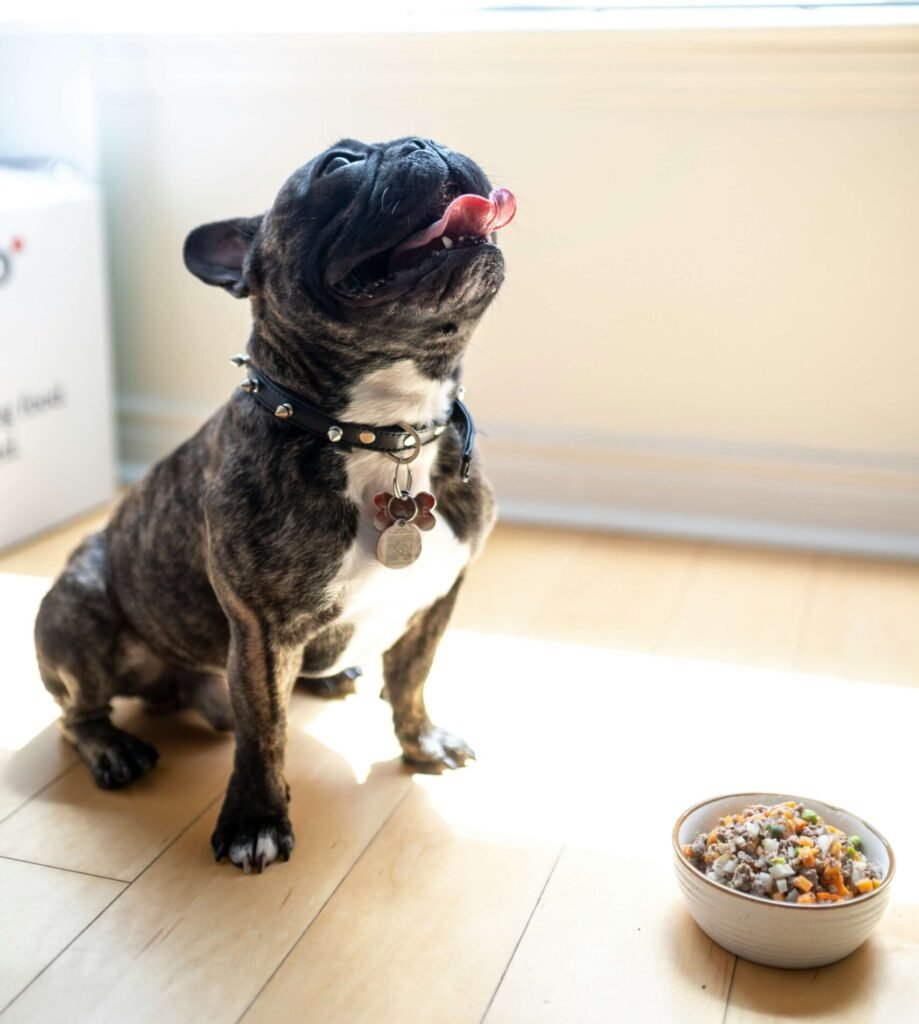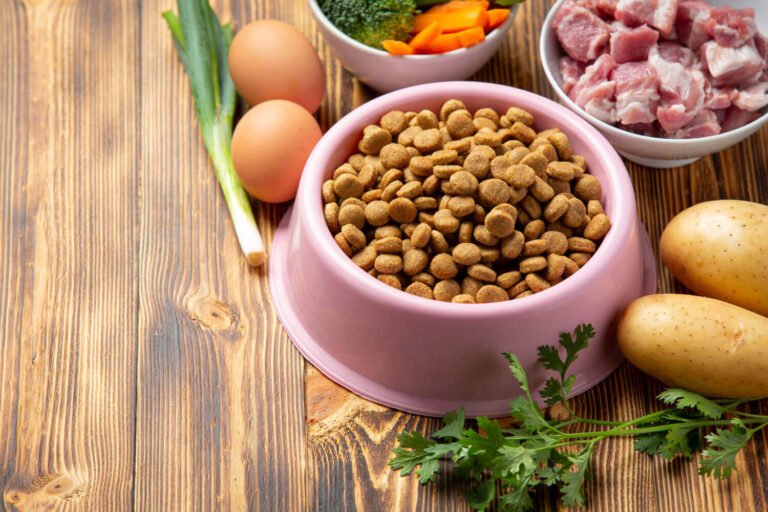How Make Homemade Dog Food: Why Pet Parents Are Switching
A lot of people think that store-bought kibble is the only safe and balanced way to feed dogs. But here’s the truth: more pet parents are now learning how make homemade dog food because they want control over what goes into their pup’s bowl. Commercial dog food often contains fillers, preservatives, and mystery ingredients. When you cook at home, you know exactly what your dog is eating.
Homemade meals can be:
fresher than packaged kibble,
tailored to your dog’s health needs,
and actually more budget-friendly in the long run.
Still, it’s not about just tossing some chicken and rice together. Dogs need balanced nutrition — proteins, carbs, fats, vitamins, and minerals in the right ratio. That’s where most beginners go wrong, and that’s why learning how to make homemade dog food the right way is super important.
Benefits of Homemade Dog Food vs Store-Bought
Now, let’s dig deeper. Why do dog owners take the time to prepare fresh food instead of just buying a bag from the store? Here are the top benefits:
1. Better Ingredient Control
When you learn how make homemade dog food, you control every ingredient. No more worrying about artificial preservatives or hidden by-products. You can pick fresh meats, whole grains, and veggies you trust.
2. Tailored to Health Needs
Got a pup with allergies, a sensitive stomach, or weight issues? Homemade food allows you to adjust recipes. For example, you can go grain-free, add extra fiber, or cook lean protein to match your dog’s unique needs.
3. Fresher & Safer Meals
Homemade food doesn’t sit in a warehouse for months. You prepare it fresh, which often makes it tastier for your dog and safer in terms of avoiding recalls.
4. Cost-Effective in the Long Run
High-quality commercial dog food can be pricey. Cooking at home can save money — especially if you buy ingredients in bulk or cook in batches.
5. Stronger Bond with Your Dog
This one’s underrated: preparing food for your pup creates a special connection. Dogs sense the love and care you put into their meals.
How Make Homemade Dog Food Safely: What You Must Know
Most pet parents jump into making homemade dog food thinking it’s as simple as boiling some chicken and rice. But here’s the truth: homemade dog food can be risky if not done right. The biggest mistake people make is assuming “human healthy food = dog healthy food.” Dogs have very different nutritional needs, and missing even one essential nutrient over time can harm their health.
So, before you put on your apron, let’s cover the essentials to make homemade dog food safely.
1. Get the Balance Right (The Golden Rule)
Dogs need protein, fat, fiber, vitamins, and minerals in proper proportions.
Protein: Chicken, turkey, beef, fish, or eggs.
Healthy fats: Salmon oil, flaxseed oil, chicken fat.
Carbs: Brown rice, oats, sweet potatoes, quinoa.
Fiber & vitamins: Leafy greens, pumpkin, carrots, peas.
Minerals: Calcium (from eggshell powder or supplements), zinc, and iron.
Common mistake: Serving plain meat and rice without added calcium. Over time, this causes bone and joint problems.
3.2 Avoid Dangerous Foods (Never Feed These!)
Some foods are safe for us but toxic to dogs. Always avoid:
Chocolate
Onions & garlic
Grapes & raisins
Avocado
Excessive salt or spices
Cooked bones (they splinter and cause internal injuries)
Even small amounts can lead to serious health issues like kidney failure or poisoning.
3. Portion Control Matters (Don’t Overfeed)
Homemade food is calorie-rich, so eyeballing portions is risky. Overfeeding can quickly cause weight gain.
Use your dog’s weight, age, and activity level to set portions.
Generally, dogs need 2–3% of their body weight in food daily, but this varies.
Curious to know that How Much Should I Feed My Dog? read our detailed article on this topic.
Easy Homemade Dog Food Recipes: Vet-Approved Options
Homemade food is calorie-rich, so eyeballing portions is risky. Overfeeding can quickly cause weight gain.
Use your dog’s weight, age, and activity level to set portions.
Generally, dogs need 2–3% of their body weight in food daily, but this varies.
“How Much Should I Feed My Dog?” with anchor “learn the exact portion sizes for your dog”.
1. Chicken & Rice Comfort Bowl (For Sensitive Stomachs)
This is one of the most popular homemade dog food recipes because it’s gentle, filling, and great for pups with tummy troubles.
Ingredients:
2 cups boneless, skinless chicken breast
1 cup cooked brown rice
1 cup chopped carrots
1/2 cup peas
1 tablespoon olive oil
Instructions:
- Boil chicken until fully cooked, shred it into small pieces.
- Cook rice separately.
- Steam or boil carrots and peas.
- Mix everything together, drizzle with olive oil.

2. Beef & Sweet Potato Energy Meal
Perfect for active dogs who need a little extra fuel.
Ingredients:
2 cups ground beef (lean, no seasoning)
1 cup cooked sweet potatoes (mashed)
1/2 cup green beans
1 tablespoon fish oil (omega-3 boost)
Instructions:
Cook beef in a skillet until brown (no spices, no oil).
Steam and mash sweet potatoes.
Steam green beans.
Mix all ingredients and let cool before serving.
Tip: Fish oil adds healthy fats for skin & coat.
3. Turkey & Veggie Lean Feast (Low-Fat Option)
This recipe is great for overweight dogs or those who need a leaner diet.
Ingredients:
2 cups ground turkey
1 cup zucchini (chopped)
1/2 cup spinach (lightly steamed)
1/2 cup quinoa
1 tablespoon coconut oil
Instructions:
Cook turkey until brown.
Cook quinoa separately.
Lightly steam zucchini and spinach.
Mix everything together and add coconut oil.
Tip: This is a grain-free homemade dog food recipe if you skip quinoa.
4. Bonus: DIY Puppy Food Recipe
Puppies need extra protein, calcium, and calories.
Ingredients:
2 cups ground chicken or turkey
1/2 cup cottage cheese
1/2 cup rice
1/2 cup pumpkin puree (plain, no sugar)
Instructions:
Cook chicken/turkey.
Mix with rice, pumpkin, and cottage cheese.
Serve warm (not hot).
Pro Tip for Readers: Rotate between recipes instead of sticking to one. Dogs need variety for balanced nutrition.
External Link Suggestion: Add a reference to AAFCO guidelines for balanced nutrition:
AAFCO Dog Food Nutrient Profiles
5 Mistakes to Avoid When Making Homemade Dog Food
A lot of dog parents start with good intentions, but sometimes even the most loving efforts can backfire. The truth is, homemade dog food can be incredibly healthy—but only if you avoid these common pitfalls.
Let’s look at the top 5 mistakes most people make (and how you can avoid them).
Let’s dig into the best brands that offer reliable special diet dog food options.
1. Skipping the Nutritional Balance
Many owners cook chicken and rice every day, thinking it’s enough. But here’s the catch: dogs need more than protein and carbs.
They also require vitamins, minerals, calcium, and healthy fats.
If meals aren’t balanced, it could lead to deficiencies in the long run.
How to Fix: Make sure your dog food follows key AAFCO nutrient standards like minimum protein (22.5% for puppies / 18% for adults) and fat (8% for puppies / 5% for adults) — so meals are truly complete and balanced.
2. Using Ingredients That Are Toxic for Dogs
Here’s the scary part—some “healthy human foods” are toxic for dogs.
Foods to NEVER use in homemade recipes:
Onions & garlic
Grapes & raisins
Chocolate & caffeine
Macadamia nuts
Excessive salt
How to Fix: Always double-check ingredients before cooking. Also you can read this article ASPCA List of Foods Toxic to Dogs for more informations.
3. Forgetting Portion Sizes
One of the biggest mistakes? Overfeeding or underfeeding.
Homemade food often looks smaller in volume compared to kibble, so owners end up piling on extra.
Over time, that can cause weight gain—or if you underfeed, nutrient deficiency.
How to Fix: Use a dog food calculator tool (like the one on our site) to measure correct daily portions.
4. Not Consulting a Vet or Nutritionist
Homemade dog food isn’t “one-size-fits-all.” A recipe perfect for a Labrador may not suit a Chihuahua.
How to Fix: Ask your vet for guidance before switching your dog’s diet. Especially important for:
Puppies
Senior dogs
Dogs with allergies or medical conditions
5. Cooking Everything (and Losing Nutrients)
Overcooking veggies or meat can strip them of vital nutrients.
How to Fix: Lightly steam vegetables instead of boiling them to mush. Keep cooking simple but mindful.
Quick Recap:
Balance is everything.
Avoid toxic foods.
Watch portion sizes.
Consult your vet.
Don’t overcook nutrients away.
If you keep these five mistakes in mind, your dog’s homemade meals will be both safe and nutritious.
Supplements & Add-Ons for Balanced Nutrition
Here’s a big misconception: “If I’m cooking fresh food for my dog, that’s already healthier than kibble—no supplements needed.”
Sounds logical, right? But actually, homemade diets often lack key nutrients that your dog can’t get from meat, rice, or veggies alone.
Just like humans sometimes need vitamins, dogs need specific add-ons to thrive. Skipping them could slowly cause deficiencies in calcium, omega fatty acids, or essential vitamins.
1. Calcium & Bone Health
Without enough calcium, dogs risk bone weakness or joint issues.
Home-cooked meals made of only chicken and rice? Almost zero calcium.
Best Add-Ons:
Crushed eggshell powder (DIY supplement)
Dog-safe calcium supplements
2. Omega-3 Fatty Acids for Skin & Coat
Dry skin, itchy paws, dull coat—these are often signs your dog needs omega-3s.
Best Add-Ons:
Fish oil
Flaxseed oil (for dogs allergic to fish)
Chia seeds
Benefits: shinier coat, reduced inflammation, and joint support.
3. Multivitamins
Dogs on a homemade diet often miss essential vitamins like A, B-complex, and E.
Best Add-Ons:
Vet-approved dog multivitamin powders (sprinkle over meals).
Tip: Avoid using human multivitamins—some contain toxic ingredients for dogs.
4. Probiotics for Gut Health
Homemade food is fresh, but it doesn’t always provide enough good bacteria for gut balance.
Best Add-Ons:
Dog-specific probiotic powders
Plain unsweetened yogurt (in small amounts)
Benefits: better digestion, reduced bloating, stronger immunity.
5. Joint & Mobility Support
Especially important for senior dogs or large breeds.
Best Add-Ons:
Glucosamine
Chondroitin
Green-lipped mussel powder
These help prevent arthritis and improve mobility.
Quick Recap for Dog Parents:
If you’re making homemade meals, don’t forget supplements. At the very least, your dog’s diet should include:
A calcium source
An omega-3 source
A vet-approved multivitamin
Optional probiotics & joint support
This way, you can enjoy the satisfaction of cooking fresh while keeping your pup’s nutrition 100% complete and balanced.
Conclusion: Cooking for Your Dog with Confidence
A lot of dog parents start homemade food because they believe “natural equals better.” And honestly, they’re not wrong—fresh, home-cooked meals can absolutely be healthier than some commercial kibble. But only when done safely and correctly.
From choosing high-quality proteins, balancing grains and veggies, to avoiding toxic foods and adding the right supplements—you now know the recipe for success.
Homemade dog food isn’t just about filling a bowl. It’s about giving your pup meals that are:
Nutritious (covering all essential vitamins & minerals)
Safe (no harmful ingredients or dangerous mistakes)
Delicious (because a wagging tail at mealtime = mission accomplished)
What to Do Next
If you’re ready to start, try one of the easy recipes above (and don’t forget to add calcium or fish oil).
Use our Dog Food Calculator Tool to check how much to feed your pup daily.
Bookmark this guide so you can refer back whenever you cook for your dog.
Final Thought
Cooking for your dog should never feel overwhelming. Think of it as an act of love—just with a sprinkle of science. With the right balance, your pup will enjoy better energy, a shinier coat, fewer digestive issues, and most importantly—a longer, healthier life with you.

FAQ About how make Homemade Dog Food
Is homemade dog food really healthier than kibble?
It depends. Many commercial kibbles are highly processed and full of fillers, while homemade dog food gives you control over ingredients. If done right—with balanced nutrition and vet guidance—homemade meals can be much healthier. But if key vitamins and minerals are missing, it can harm your dog over time.
Can I feed my dog homemade food every day?
Yes—but only if it’s balanced and complete. Dogs need the right mix of protein, fats, carbs, calcium, and micronutrients. Feeding random leftovers or chicken-and-rice daily isn’t enough. If you want homemade dog food to be your dog’s daily diet, use supplements or consult a vet to ensure long-term health.
Is homemade dog food cheaper than buying dog food?
It depends on the ingredients you choose. Basic recipes using chicken, rice, and vegetables are often cheaper than premium kibble or canned food. But if you’re using organic meats, supplements, and fresh produce, the cost can actually go up. The real value is in quality and health benefits, not just the price.
What supplements should I add to homemade dog food?
The most common supplements include:
Calcium (from eggshell powder or bone meal)
Fish oil (for Omega-3 fatty acids)
Multivitamins (vet-approved)
These help cover gaps in homemade meals and prevent nutrient deficiencies. Always check with your vet before starting supplements.
Can I switch my dog to homemade food suddenly?
No, avoid switching abruptly. Transition slowly over 7–10 days by mixing small portions of homemade food with your dog’s current diet. This prevents tummy upsets like diarrhea and vomiting.
Want to know the real “do’s and don’ts” of homemade meals? Check out the AKC guide: Cooking for Your Dog – Do’s & Don’ts of Homemade Dog Food for vet-backed tips.
Is homemade dog food nutritionally complete?
Homemade meals can be healthy—but only if they include the right mix of protein, carbs, fats, vitamins, and minerals. You’ll need supplements like calcium and omega-3s unless explicitly included in the recipe.
Can I just cook chicken and rice every day?
No—feeding chicken and rice alone is a big mistake. Dogs need much more than protein and carbs. Without added nutrients like calcium and healthy fats, such meals can cause nutritional deficiencies over time.
How do I know if my homemade meals are balanced?
Use dog-specific food calculators or follow vet-approved recipes from trusted sources. Always consult your vet or a canine nutritionist to ensure your dog’s diet meets AAFCO nutrient guidelines.
How should I transition my dog to homemade food?
Switch gradually over 7–10 days. Start with 25% homemade mixed with 75% regular food, then slowly increase the homemade portion as your dog adjusts—this prevents digestive upset.
Can homemade dog food be cheaper than store-bought?
Sometimes. If you cook in bulk and use budget-friendly whole ingredients, homemade meals can cost less than premium kibble. But including supplements and specialty ingredients may increase overall cost.




